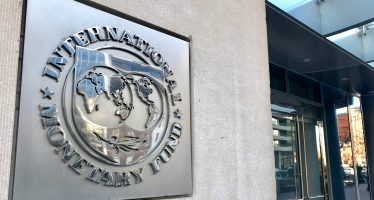Asian Development Bank: Three Actions Governments Can Take to Help to Tackle Climate Adaptation
Impacts of climate change are causing significant economic and social challenges, and there is an urgent need for good fiscal policy to prepare adaptation strategies.
Climate-related disasters in Asia and the Pacific have affected 800 million people and caused $400bn in losses recent years with developing countries the hardest hit.
While progress was made at the 2023 United Nations COP28, data shows that adaptation to climate change is crucial to lives, livelihoods, and economies.
Climate adaptation refers to economic and social adjustments to minimise losses and maximise opportunities. Low-income countries need stronger and better-financed adaptation strategies.
The substantial investments required cannot be a simple add-on to fiscal policy — especially given that countries in Asia and the Pacific are finding their fiscal space squeezed by economic challenges, including higher borrowing costs.
But there are ways that fiscal policy can be used to prioritise adaptation to climate change.
Fiscal risk-assessment must be improved to identify, assess, and disclose the impact of climate and disaster risks via four main channels: macro-economic shocks commodity shocks, infrastructure disruption, and financial sector risks. Other things to be considered include reconstruction costs, the role of state-owned enterprises and public–private partnership liabilities. Adaptation needs, including infrastructure sectoral resilience, must be considered, as must poverty reduction, public healthcare, and education.
The Philippines publishes an annual fiscal risk statement that includes a section on climate disasters. Policy makers should conduct multi-hazard climate- and disaster-risk assessments to analyse the average annual losses due to climate change. These will provide inputs for estimating the costs and benefits of investing in resilience and adaptation, inform investment decisions, and provide guidance on how to mitigate risk (through engineering design) or transfer risk (through insurance).
Fiscal risk management must be strengthened by improving risk identification and management and targeting investment to ensure effective handling of climate- and disaster-related risks through preparedness, reduction, and risk transfer.
Bangladesh, Indonesia, and Nepal have developed climate budgeting systems to help tag climate-related investments. Policymakers should integrate climate risk management into their public investment management systems.
There must be an optimisation of resource allocation, financing, and investment. This allows fiscal policies to mobilise more domestic resources and leverage private finance for investment in climate action. It includes tools such as carbon taxes to generate revenue, the phasing-out of fossil fuel subsidies, and the redesign of sovereign funds. Mongolia is considering allocating a portion of its fund to invest in green bonds.
These actions can be complemented by innovation. Resilient bonds can mobilise finance for investment in climate actions, while special-purpose vehicles can pool funds from multiple sources — including de-risking private investment in climate action and providing concessional capital. Debt-for-climate or debt-for-nature instruments could enable investment in appropriate action.
In Ecuador, a debt-for-nature conversion (a $656m sustainability-linked loan) helped support the effective management of 60,000 square km of marine reserve in the Galapagos, generating $459m in conservation savings and $1.1bn in fiscal savings.
The Philippines mobilised resources for the development of a targeted financing mechanism, the People’s Survival Fund. It provides grants to mainstream adaptation from the national government to local government units and build resilience at all levels of the economy and society.
Policymakers should consider this broad range of instruments to build more climate-adapted economies — but how should they select the best options? All countries need to adapt, and their benefits will be the highest if adaptation is holistically integrated into development plans.
To implement a structured approach, there must be funding and support for projects that target specific issues and provide wider benefits. This includes infrastructure, early warning systems, and new technologies. They should also remove hurdles to private investment by eliminating harmful subsidies, setting proper carbon prices, and sharing knowledge.
Fair redistribution policies should be designed with compensation plans for communities forced to relocate due to rising sea levels.
Once areas of intervention have been defined at the country level, cost-benefit analyses can be applied to adaptation programmes. Attention should be given to the distributional impacts to maximise the impact of spending while balancing efficiency and equity according to societal preferences and risk aversion.
Such a method requires strong knowledge of adaptation solutions, available good-quality data, and support from development finance institutions.

Authors: Declan Magee is a principal economist in the Climate Change and Sustainable Development Department of the ADB. Agnes Surry is ADBI’s Deputy Head of Capacity Building and Training and Senior Economist.
The views expressed are those of the authors and do not necessarily reflect the views of the Asian Development Bank, its management, its board of directors, or its members.
You may have an interest in also reading…
World Bank Group’s PREM: Harnessing Trade Opportunities for Growth and Development
The pace of global trade integration over the past two decades has been extraordinary. Trade has been a key driver
Global Imbalances and the Pandemic
The International Monetary Fund’s tenth annual External Sector Report (ESR, August 2021) shows how current account deficits in the global
From Barter to Blockchain: Banking Through the Ages
From trading seashells to investing in crypto, our relationship with money and financial institutions has seen some serious changes… For


















































































